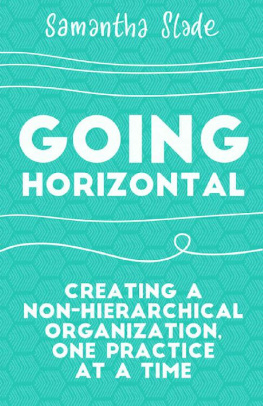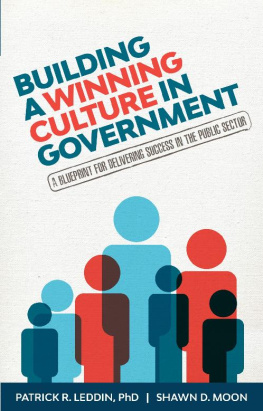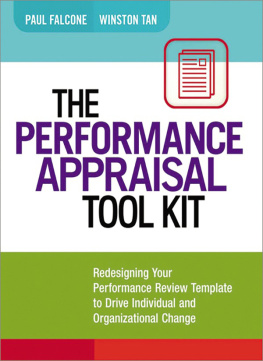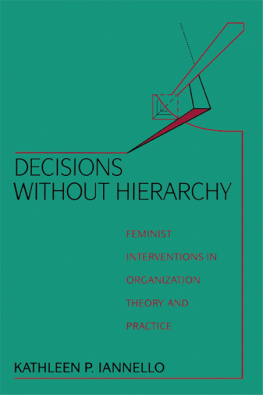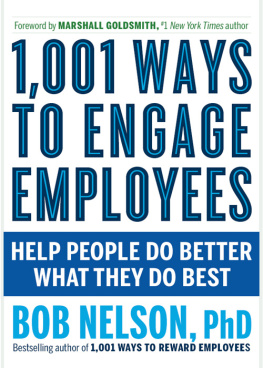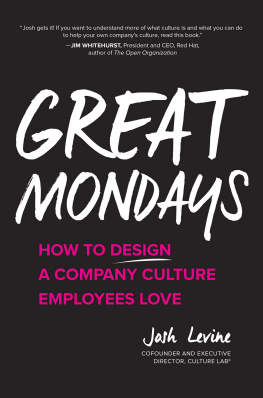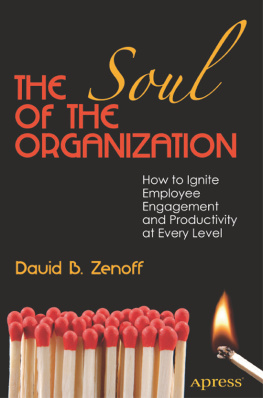Praise for Going Horizontal
Going well beyond horizontal theory and concepts, this work is social practice in action; a wonderful companion for anyone who senses that reconnecting with our true human nature in our work is the only way forward.
Mary OKeeffe, Director, Loomio (New Zealand)
Samantha Slade offers a much-needed alternative to our current systems of organizing. Her book is as refreshing as it is personal and will be indispensable for those looking to bring more humanity into their organizations.
Joel Bothello, Assistant Professor, Department of Management, John Molson School of Business, Concordia University (Canada)
This book is for anyone whos ever wondered what the future of truly fulfilling work could look like.
Melissa Aronczyk, Associate Professor of Journalism and Media Studies, Rutgers University (USA)
Samantha Sladeand this bookis what the world of work needs more of. Sparky thinking, applied methodologies, and humanist principles.
Perry Timms, HR Most Influential Thinker 2017, founder of PTHR, and author of Transformational HR (UK)
Samantha is on the leading edge of self-management for organizations. She is breaking ground to discover and share the new ways we can work together that we are all starving for.
Amanda Hachey, Director, NouLAB (Canada)
In the transformation of our society to become more human, Samantha is a reference.
tienne Collignon, President, TeamFactory, and learning systems teacher (France)
If theres anyone who knows how to structure workplaces in new, more effective, more energizing ways, its Samantha Slade. Her book, Going Horizontal, is a masterwork in how to turn a sluggish hierarchical organization into one thats egalitarian and alive.
Mark Levy, founder of Levy Innovation LLC and author of Accidental Genius (USA)
Samantha Slade has, with her own life, taken a bold journey into the landscape of how we can evolve our organizations, lead together, and focus on the purposes we choose to serve. I invite you to listen to her, understand her message, be inspired, and enjoy your own practice for a more humane and kinder world.
Toke Paludan Moeller, sustainable entrepreneurship pioneer, Art of Hosting steward, and cofounder and CEO, Interchange (Denmark)
Samantha outlines in clear, concrete, and highly accessible language tested practices, ranging from the personal to the systemic, that support participatory ways of working to flatten and democratize organizations. I can easily envision this book quickly becoming a standard reference for those involved in organizational development and change design at every level.
Rosemary C. Reilly, Graduate Program Director, MA in Human Systems Intervention, and Associate Professor, Concordia University (Canada)
A brilliant distillation of lived experience, field research, and more academic researchtransformed into simple practices to live by. It turns all the philosophical discussions about collaboration and self-organization into incredibly practical and doable practices.
Caroline Rennie, cofounder of Gen-H (Switzerland)
This is a brilliant field guide from a practitioner and organization designer who has dared to explore, experiment with, and engage with the new ways of working and being. This book must be in the list of essential reading for the #futureofwork.
Sahana Chattopadhyay, Asia-Pacific thought leader on the future of work and Partner, Enlivening Edge (India)
Going Horizontal is a gift to anyone eager to see beyond the trappings of traditional hierarchy and explore new ways of working and being.
Brent Lowe, The Scale Coach for Founder CEOs (Canada) and coauthor of Reinventing Scale-Ups
Samantha Slade shares her knowledge and experience with accuracy, wisdom, and amazing gentleness. This book and the proposed practices are a truly precious help and compass toward more horizontality in my organization.
Damien Versele, CEO, De Sleutel (Belgium)
Sam Slades Going Horizontal finally brings the notion of cocreation out of the theoretical realm and makes it practical and achievable.
Roxane Maranger, Aquatic Ecosystem Ecologist and Professor of Biology, University of Montral, and President-Elect, Association for the Sciences of Limnology and Oceanography (Canada)
Going Horizontal is a key piece in the field of organizational consciousness and working transformatively in the 21st century.
Melinda Vrfi, AoH practitioner and cofounder of Organik (Hungary) and Resonanz (Austria)
Going Horizontal speaks to the three innate and universal psychological needs for humans to function optimally: self-direction, competence, and relatedness. If you want to increase the probability of having a workplace where fun, purpose, and meaning create a greater good, read this book.
Jacques Forest, organizational psychologist; Professor, School of Management, Universit du Qubec Montral; and Chartered Professional in Human Resources (Canada)
The time has come for every enterprise to reimagine and redesign how it works, and Going Horizontal will be a key resource.
MJ Kaplan, Partner, The Ready, and Board Member, Loomio (USA)
I especially appreciate the how to approach as this is where you will struggle most when implanting changes that are based on sharing and participation.
Bernd Reichert, Executive Director, Executive Agency for Small and Medium-Sized Enterprises (Belgium)
Samantha embodies a new way of seeing work and living it, and that is how she has helped transform our organization, step by step.
Huguette Robert, Director, and Steeven Pedneault, Social Designer, Prsges (Canada)
More than ever, the public sector needs talent like Samantha to learn a basic human skill for our democracy: cooperation for social innovation.
Ccile Joly, Project Director, Collaborative Public Innovation and Learning Lab, National Center of Territorial Public Administration (France)
Read this book to learn how to see the world in a new perspective and develop a new set of muscles for building the commons!
David Bollier, author of Think like a Commoner (USA)
Discover how to step into a more mature and responsible management paradigm where human beings can get up to a different level of mastery and purpose alignment. This book has challenged my own beliefs and ideas about my responsibility to be the change.
Ana Manzanedo, Governance Connector, Ouishare (Spain)
Samantha embodies the principles she upholds: a profound respect of the contribution of each individual and mastery of the science of efficient collaborative processes.
Manon Poirier, Executive Director, Quebec Chartered Professionals in Human Resources (Canada)
Samantha Slade deeply understands the power and vitality of non-hierarchical cultures. I highly recommend Going Horizontal as a tool when developing your horizontal culture.
Sarah Houseman, PhD, Governance Researcher, La Trobe University (Australia)
With Samantha Slades book, we now have an insightful resource to help people understand how to operate effectively in this new paradigm. This is the ultimate companion for going horizontal.
Edwin Jansen, Head of Marketing, Fitzii (Canada)
This book is a must-read, discussing seven domains that are critical in a horizontal context.
Next page
